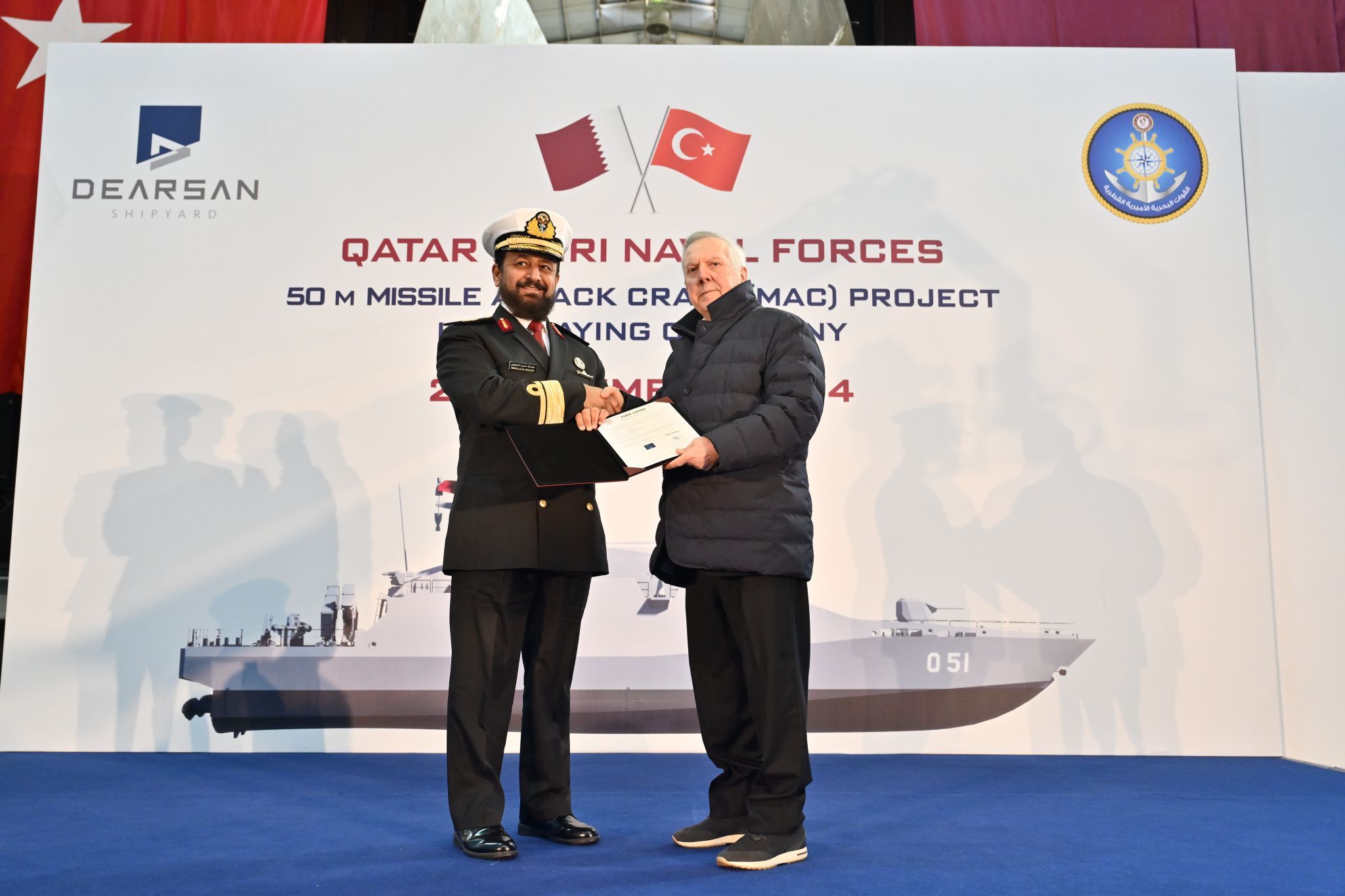Qatar Emiri Naval Forces (QENF) marked the keel-laying ceremony of two 50-meter Missile Attack Craft (MAC) at Turkish Dearsan Shipyard on December 23. The ceremony was attended by a high-level Qatari delegation led by Major General Abdullah Hassan Al Sulaiti, commander of the QENF. The MACs, with an overall length of 50.76 meters, a beam of 9.53 meters, and a draught of 2.10 meters, are engineered for advanced maritime operations. Designed for a top speed of 36 knots and an operational range of 1,000 nautical miles, these vessels are tailored for the challenging conditions of the Persian Gulf, Gulf of Oman, and Arabian Sea. In addition to combat capabilities, the vessels are designed for a wide range of secondary missions, including maritime patrol, territorial water protection, anti-piracy operations, counter-smuggling efforts, surveillance, and search-and-rescue missions.
Armed with a formidable suite of weapons, the vessels feature four Çakır cruise missiles and Sungur air-defense missile launchers. The primary weapon system is a Leonardo Marlin 40mm naval gun, supported by two Aselsan Stamp-2 12.7mm Remote-Controlled Weapon Stations (RCWSs) and two manually operated 12.7mm machine guns. This combination equips the MACs for both surface warfare and air-defense roles, while also addressing asymmetric threats. The MACs are outfitted with cutting-edge Aselsan Mar-D radars as their primary search system, complemented by the Alper low-probability-of-intercept (LPI) radar and Kelvin Hughes SharpEye radar for navigation. Fire control is enhanced by the Aselsan Ahtapot-S electro-optical system, while electronic warfare capabilities are bolstered by Aselsan ARES 2NC electronic support systems. These systems collectively provide robust situational awareness and combat readiness.

Qatar has become a prominent customer for Turkish defense products, including armored vehicles, drones, and naval vessels. The agreement for the MAC project was formalized in March 2023 during the Doha International Maritime Defence Exhibition (DIMDEX), reflecting Qatar’s commitment to modernizing its naval forces. The project has achieved several design milestones, with the preliminary evaluation completed on July 3 and the Critical Design Review finalized on November 28. The vessels are expected to play a pivotal role in enhancing Qatar’s maritime security and regional stability. This development is another example of Qatar’s efforts to bolster its defense capabilities in an increasingly complex regional security environment, demonstrating the strategic value of its partnership with Türkiye.
The development of these missile attack craft underscores the deepening defense ties between Qatar and Turkey, a partnership rooted in shared security interests and bolstered by long-standing agreements. The 2007 Defense Industry Cooperation Agreement laid the groundwork for mutual defense initiatives, enabling technology exchange and joint expertise development. A significant milestone in this relationship was the establishment of the Turkish-Qatar Combined Joint Force Command in 2015, initially hosting a small Turkish contingent in Qatar. This base has since become a hub for joint exercises and operational coordination, symbolizing the strategic importance of bilateral ties. During the 2017 Gulf crisis, Turkey expanded its military presence in Qatar, further solidifying this alliance.















